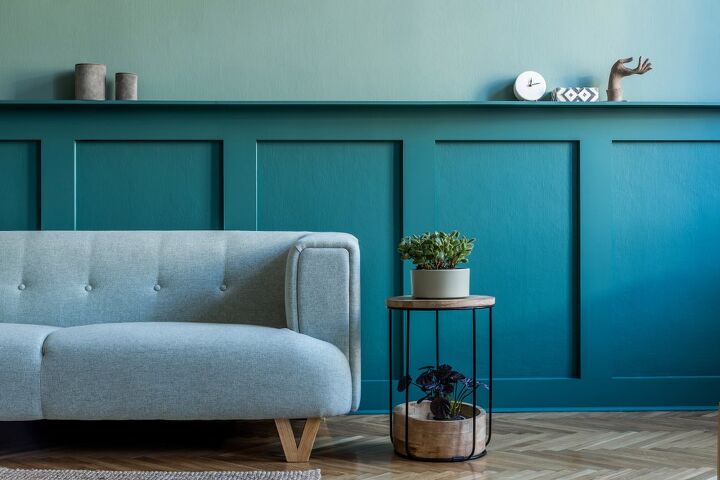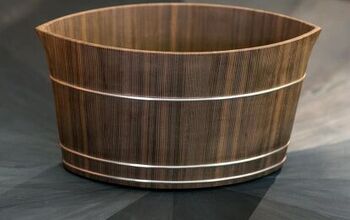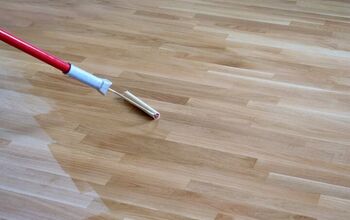8 Types Of Wood Paneling (With Photos)

Wall paneling used to be considered incredibly outdated but, like many things, it has seen a resurgence in recent years. The dark, dull, laminate-covered plywood sheets have been replaced by a more modern approach. When implemented well, modern wood paneling can make a unique decorative statement in your home.
Wood paneling is an excellent way to improve the aesthetics of your living spaces, while also providing some much-needed insulation. The wood serves as a natural insulator and offers a timeless, warm, welcoming look that stands out. There are many different types of wood paneling, including board and batten, shiplap, plank wall, reclaimed wood, raised panels, tongue and groove, beadboard, and flat panels.
Continue reading for a more detailed look at the variations of wood wall paneling you can choose from to freshen up your space, as well as the associated pros, cons, and average price range.
1. Board and Batten
Consider board and batten wood paneling if you want to instantly add an interesting 3-dimensional texture to the walls of your home. Although this style is more often used as exterior siding, it is now being used in interior home design as well. The word “batten” describes the thin piece of molding that is installed over the joints between boards.
With board and batten, you can stain or paint the paneling any color you desire. This type of wood paneling often looks especially elegant in dining rooms, home offices, and studies. Overall, board and batten paneling is considered a low-maintenance option, provided that it is treated well. The major downside to board and batten is the cost, as it is one of the most expensive options because of the precious and amount of material required.
The cost of board and batten wood paneling depends on the type of material that is used. It is typically made from either wood or vinyl, with vinyl being the more affordable option of the two. Fortunately, you can even find some vinyl board and batten paneling that looks almost exactly like the real thing.
Depending on the material that you choose, the cost of board and batten wood paneling ranges from $0.75 to $9 per square foot.
2. Shiplap
If you’re aware of modern design trends, then you know how popular shiplap is. Shiplap used to mainly be used for home exteriors. This type of wood paneling consists of boards with horizontally-running grooves that are installed close together to create a weatherproof seal. The groove, also called the rabbet joint, is what allows the boards to fit easily together.
Shiplap is a lovely design element that may be exactly what you’re looking for. It offers crisp, clean lines and tons of visual interest. The boards are either MDF or real wood and can be fixed vertically or horizontally depending on your preferences. This type of wood paneling also has the ability to stand up to more abuse than traditional drywall. For this reason, shiplap is a great choice for anyone who wants ornate, but rugged walls.
Although shiplap is durable, because of the grooves, it can be very challenging to clean and keep clean. This type of wood paneling will require a bit more time and effort to maintain. It’s also important that shiplap is installed properly in order to keep it from rotting or warping over time due to water leakage.
When real wood is used, shiplap will cost you from $2.50 to $7 a square foot.
3. Plank Wall
Plank walls can give the interior of your home a stunning appearance and natural feel that is rich in wood-like texture. There are numerous options when it comes to plank walls, including reclaimed wood, new wood, or even wood that is specifically made to look vintage. Like shiplap, the planks can be arranged horizontally, vertically, diagonally, or even in a herringbone pattern to achieve the look you want.
The planks come in varying sizes and you can choose from many different types of wood, colors, and finishes. Regardless, this type of wall paneling can look great in any style home. The cost of the planks can vary widely based on the type of wood that you choose and the area you’re trying to cover.
You can try salvaging planks to save as much money as possible, while MDF will be more affordable than solid wood. Also, purchasing sheets of wood and then having them cut to size (or cutting them yourself) can help reduce costs.
4. Reclaimed Wood
Reclaimed wood is an option when it comes to plank walls, referring to a high-quality type of wood that comes from an original source – such as a home, ship, or barn – and has been improved upon. It comes in a variety of stains to add a rustic, weathered, and aged look to a ceiling or wall.
This type of wood is environmentally friendly and also much stronger than virgin wood, as it typically comes from older trees. In addition to being more durable, reclaimed wood is more expensive than new wood since it has to go through a process to ensure that it is safe for use in home interiors.
Since true reclaimed wood is notoriously more expensive than virgin wood, some homeowners will purchase newer boards and distress them to have the same look as reclaimed wood.
5. Raised Panels
Made popular by royal families several centuries ago, raised panels have remained a popular style over the years. Like board and batten, this look consists of 3-dimensional pieces: beveled wood panels that are elevated over their adjoining vertical and horizontal rails. The six components that make up this type of wood paneling includes the top rail, bottom rail, cap molding, stile, cove molding, and raised panel.
This type of paneling creates a unique, classic, and eye-catching look. The cost of raised panels ranges from $10 to $30 a square foot.
6. Tongue and Groove
Although similar in terms of appearance to shiplap, tongue and groove wood panelings connect differently. Instead of “rabbet” joints of shiplap, this type of paneling uses what’s known as a tongue and groove connection to fit the panels together snugly. The biggest difference between shiplap and tongue and groove is what they look like pre-installation.
Tongue and groove connections have been used in woodworking for many years and are a very effective way to keep wood panels held together. The resulting look is clean and cohesive. Tongue and groove is a great solution for keeping the panels clean. Though, the main downside to this type of wood paneling is the time required for installation.
Since each panel must be positioned tightly in place, installation can take a long time. The cost of tongue and groove wall paneling ranges from $2 to $3 per square foot.
7. Beadboard
This type of wood paneling is decorative and features grooves that are evenly spaced along the paneling. The paneling can be installed partially up the wall or the full height, depending on the look you’re going for. The width between grooves, or the flat portion of the panel, is typically 1.5 inches or 3 inches. Though, you can have panels made with any custom width you desire.
There are two main types of beadboard: sheets and tongue-in groove. The tongue-in groove option requires more time and effort, as you have to install each board individually. Whereas, sheet beadboards are available in 4 or 8-foot lengths. You can keep the boards white or paint them a different color for a unique look.
Beadboard offers a classy, traditional look to any living space. The style works well with pretty much any material used in the design of the space. One thing to keep in mind when you’re considering beadboard is the cleaning process. Since these panels feature grooves, they tend to be more susceptible to trapping dirt.
The cost of beadboard wood paneling varies based on the quality of the wood used and the amount you need to cover the area. As you might expect, MDF costs more than real wood. MDF will cost you between $0.50 and $0.75 per square foot and real wood costs roughly $1 per square foot on average.
What is Wainscoting?
Oftentimes, the terms “wainscoting” and “broadboard” are used interchangeably. However, wainscoting is a broader term that is used to describe any sort of decorative wall paneling that is used as insulation, a wall accent, and to prevent wall damage. The two main components of any wainscoting is the frame and the panel.
8. Flat Panels
The flat panel style began in the 19th century and has continued to grow in popularity since then. The look that flat panels yields is exceptionally polished with clean lines. This approach is much simpler than the more formal look of raised panels. Flat panels are a great way to keep things simple on your walls, but still interesting.
With this style, there are numerous heights to choose from with the most common choices being chair rail height (28 to 32 inches), the whole wall, and three-quarters up the wall. The smooth texture of these panels matches wonderfully the elements of a space, instead of overwhelming it.
Flat panels range in cost from between $7 and $10 per square foot.
Related Guide

Jessica considers herself a home improvement and design enthusiast. She grew up surrounded by constant home improvement projects and owes most of what she knows to helping her dad renovate her childhood home. Being a Los Angeles resident, Jessica spends a lot of her time looking for her next DIY project and sharing her love for home design.
More by Jessica Stone






























![Standard Dining Room Table Dimensions [for 4, 6, 8, 10 and 12 People]](https://cdn-fastly.upgradedhome.com/media/2023/07/31/9074335/standard-dining-room-table-dimensions-for-4-6-8-10-and-12-people.jpg?size=350x220)




